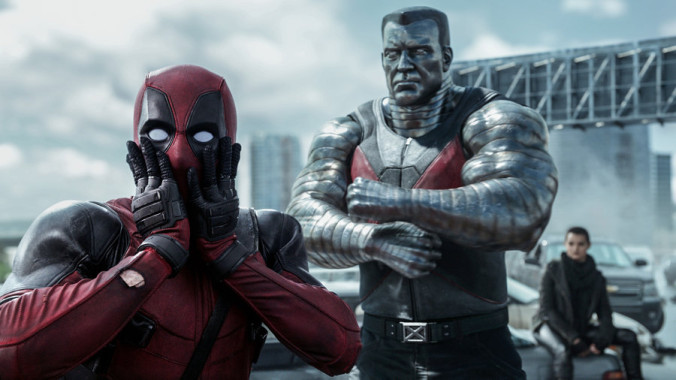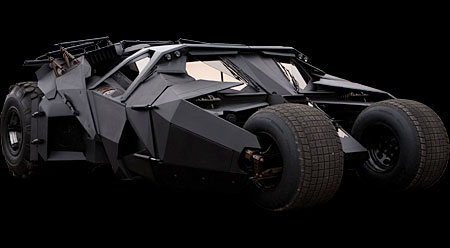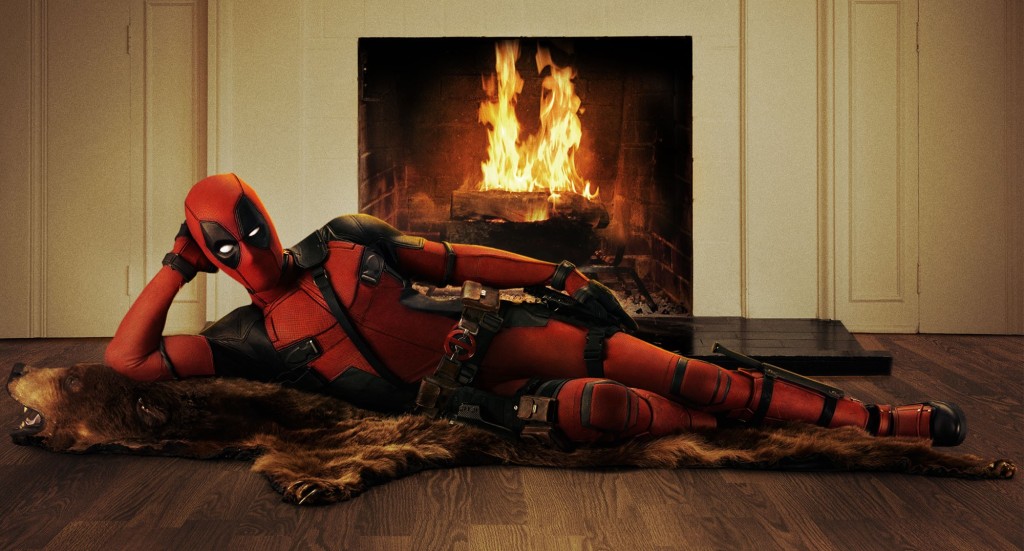Comic book movies are big business. It was not always this way. Even if it seems that all Hollywood movies today are merely adaptations of comic book characters. Superman and Batman were always popular characters and were the focus of relatively successful movies. This includes the Christopher Reeve Superman movies through the launch of Tim Burton’s Batman franchise in 1989. But the recent trend of superhero dominance at the box office essentially began with Bryan Singer’s X-Men in 2000.
X-Men languished in development for years, but then surprised with a massive box office haul that summer – and made a star out of Hugh Jackman in the process. It also adopted the tone of the comic books and made it safe to adapt the concepts as a movie. The success of X-Men begat the Tobey Maguire Spider-Man franchise, which begat the Christopher Nolan Dark Knight trilogy, and suddenly Warner/DC Comics’ and Marvel’s collective catalog of characters became hot property. Not all characters have been treated equally, however. Batman, for example, will always be seen as a safer bet than, say, Ghost Rider. Movies are budgeted accordingly.
Today, the average Hollywood movie budget exceeds $100 million. This includes salaries for the cast and crew, CGI costs, and in many cases… licensing rights. Yes, your favorite comic book characters are subject to both copyright and trademark protections. Like I said, it is big business.
How do these licensing and intellectual property issues affect the production of a movie for a minor character like, say, Deadpool? Let the games begin!
How are comic book characters subject to copyright law?
Since the 1930s, Marvel has created in excess of 8,000 different characters. Each one of these is subject to separate copyright protections in the United States.
Under the U.S. Copyright Act, any original work of art that is sufficiently fixed in a tangible medium of expression is subject to copyright. This includes literary works, pictorial, graphic, and sculptural works, and motion pictures and audiovisual works, among other categories.[1] The issue of whether a character in a book can be uniquely protected by copyright has been addressed by the courts.
To the extent that a character is “sufficiently delineated” from an otherwise stock character – it is copyrighted.[2] That said, according to another court, copyrighted characters must “constitute the story being told” as opposed to merely being pawns in a plot device.[3] Ancillary background characters in theory do not receive the same protections. For example, Clark Kent is protected, but an unnamed background character at the Daily Planet would not participate in the telling of the story and is accordingly a non-protected stock character. The recent consensus within the legal community is that the “sufficiently delineated” standard is the more governing test for character copyrights on characters. Of course, the Superman character (and who owns it) remains the subject of extensive litigation efforts by multiple parties.[4]
Many of the well-known comic book characters of today were created during the existence of the Copyright Act of 1909. This Act included a series of renewal rights and staggered durations for certain works. The 1909 Act allowed for a 28 year term that could be renewed for an additional 28 years, though this second term was extended to 47 years through the passage of the 1976 Copyright Act. This term was again extended to a total of 67 years by the 1998 Copyright Term Extension Act (thanks, Sonny Bono). This essentially allows for a term of 95 years from the first instance of publication if the work was initially renewed during the 28th year. Using Superman as an example – the first known publication of the Superman character was on June 30, 1938. This would mean the copyright for the Superman character expires at the end of 2033.[5] Though Disney may have something to say about that in the future.[6]
Copyrights for comic book characters created on or after the Copyright Act of 1976 have similar protections and terms but do not have pesky renewals to worry about. A character or similar work created today for a Marvel entity will have its copyright expire and enter the public domain at the end of 2111.[7]
Do not be so eager to make your own Superman movie in 2034, however. Even when the copyright expires, Warner and DC Comics will likely maintain trademark interests in particular aspects of the character.
How are comic book characters subject to trademark law?
It seems unfair, right? The copyright expires, but another type of intellectual property can piggyback on copyright law and preclude the public from using the Superman character. How is that legal?
Trademarks and copyrights are both “intellectual property” but they operate independently. Copyrights protect works of art, including graphic novels, characters and movie adaptations. What seems most unfair is that copyrights have known expiration dates and will enter the public domain after 95 years in many instances. Whereas trademarks do not have set expiration dates. Trademarks remain valid and enforceable so long as they remain properly in use. Trademarks exist to help the consuming public identify the source of particular goods and services. In this particular instance, trademarks can be used to help consumers identify the source of comic books and movies and other related goods, i.e. Marvel and DC Comics. As long as Marvel uses the marks and the public identifies certain marks with Marvel, trademark law governs.
Trademark law does not protect characters in isolation. Trademarks have to tie identifying features of that character to a good or service being used in commerce. Not surprisingly, Marvel and DC Comics use their trademark rights on everything associated with their characters. Anything from toys to clothing to video games to other media. To the extent that Marvel or DC Comics ties particular identifying visual traits of a character to its own goods or services (for example, the “S” on Superman’s chest or the “truth and justice for all” slogan), that is a proper trademark use in commerce and it will often be protected by U.S. trademark law. Accordingly, any entity (even if not a direct competitor) that seeks to use, say, Batman’s image – the mask, the cape, or even the Batmobile – to sell a product without permission from the owner risks immediate exposure for claims of copyright infringement, trademark infringement, unfair competition, trademark dilution and more. Yes, the Batmobile itself is a character protected by copyright and trademark law.
Because of these copyright and trademark issues, licensing is the name of the game. Marvel and DC Comics own a vast library of characters but often lack the resources to exploit them beyond the world of comic books themselves. This leads to a complicated series of licenses and negotiations that allow movie studios to use characters for limited purposes.
As demonstrated by Deadpool, the twisted web of character IP rights, licensing issues, movie budgets and even copyright fair use is a target for Wade Wilson’s acerbic wit.
Applying copyrights, trademarks, and character licensing in Deadpool
Deadpool first appeared as a character in a Marvel comic in 1991. While always a popular character, especially for his fourth-wall breaking habits and constant pop culture references, he was always a relatively minor character in the larger Marvel Universe. The character was part of the X-Men universe, but only tangentially. The Wade Wilson/Deadpool character first appeared in a major motion picture in the X-Men Origins: Wolverine movie in 2009 and plans were made for a spin-off Deadpool movie.
Deadpool: [to the audience] I know right? You’re probably thinking “Whose balls did I have to fondle to get my very own movie”? I can’t tell you his name, but it rhymes with ‘poolverine.’
Just one problem – this movie was abjectly terrible. It also seemed to neuter the talkative nature of Wade Wilson by sewing his mouth shut. This mistake was roundly mocked, not only by fans and critics, but also by Deadpool himself when they finally made a stand-alone movie.
Ajax: Why don’t you do us all a favor and [shut up] or I’ll sew your pretty mouth shut.
Wade Wilson: Oh, I wouldn’t do that if I were you.
What took so long though? Deadpool was a popular character. Comic book movies are printing money at the box office. Marvel has a huge library of characters to use whenever it wants. Right? Well, not exactly.
Marvel Studios – the movie making entity – does not own Marvel’s characters. Nor does it have licensing rights to the entire library of Marvel characters. Marvel and Marvel Studios are separate entities (talk about a confusing trademark!). Marvel Entertainment is owned by Disney! Meanwhile, Sony Pictures owns the rights to Spider-Man. 20th Century Fox has the rights to most of the X-Men characters. And Fox and Marvel Studios are not playing nice. Additionally, Marvel previously licensed or assigned a lot of these character rights in piecemeal. Movie rights are distinguished from television rights. Literary rights are separated from apparel and action figure rights. Marvel has kind of made a mess with its IP portfolio prior to the Disney deal. Accordingly, even though Marvel Studios has a long-standing licensing deal, Marvel Studios does not have unfettered access to all of Marvel’s characters or stories. Marvel Studios therefore has to play nice with Fox and Sony Pictures.
Thus, even though Deadpool exists in the X-Men world, Marvel Studios’ desire to make a Deadpool movie was restricted by licensing rights and budgets. X-Men characters cost a lot.
“Wow, this is such a big house, but I only ever see the two of you here. It’s like the studio didn’t have enough money for any more X-Men…” — Deadpool
Deadpool was a passion project for Ryan Reynolds for many years, but only began filming in 2015 with a budget of less than $60 million. This was less than all of the prior budgets for X-Men centric character movies. The studio even cut an additional $7 million from the budget towards the end of filming – which led to creative limitations on use of CGI for elaborate fight scenes. The original script also intended to use the Marvel character Garrison Kane, but this was removed explicitly for budgetary concerns prior to filming. Instead, the film’s only X-Men characters to appear were Colossus and the previously unseen Negasonic Teenage Warhead. Not surprisingly, given the fourth-wall breaking nature of the Deadpool character and the budgetary limitations – this just became comedic fodder for the writers. As explained in the trivia section on IMDb:
Throughout the film, Deadpool accuses the studio of not having enough money to pay for several elements in the movie. In fact, Fox Studios cut seven million dollars out of the film’s budget at the last minute, necessitating several rewrites. Items cut from the film included a motorcycle chase between Wade and Francis, the addition of more named villains, and several action sequences. In the latter instance, the fights were scaled down by having Deadpool forget to bring his ammo and gun bags.
Naturally, consistent with the character and the tone of the movie, Deadpool makes a series of winking references to other aspects of the Marvel universe and his character’s movie limitations throughout the film. Including:
Deadpool: Okay guys, I only have twelve bullets, so you’re all going to have to share!
The ammo bag that Deadpool fills with firearms that is later forgotten in the final battle is a nod to Deadpool’s unlimited weapon and ammo satchel in Marvel Comics [but removed for CGI budgetary reasons] and
After being captured by Colossus on the bridge, Deadpool is told he is being taken to the professor, in reference to the leader of the X-Men, Charles “Professor X” Xavier. Deadpool responds, “Which one, McAvoy or Stewart?” as in James McAvoy and Patrick Stewart, both of whom have portrayed Professor X in previous X-Men movies, including simultaneously in X-Men: Days of Future Past (2014).
[studio could not afford McAvoy or Stewart] and
Towards the end when Deadpool is fighting the soldiers, he stops for a moment when he recognizes one of them as “Bob”. Bob, agent of HYDRA, is a recurring character in Deadpool comic books, who is a cowardly sidekick type character and is often reluctantly forced to aid Deadpool in his escapades. The HYDRA aspect of the character was removed for obvious licensing reasons.
“Bob” would have cost more money, so he is never referenced by his complete character name. Sneaky, sneaky. Of course, Stan Lee still made his requisite cameo appearance. And even with all these budgetary obstacles, Deadpool still made $135,000,000 on its opening weekend, and as of today it is approaching $700 million worldwide, which only means one thing:
Sequel.
A properly-budgeted sequel, perhaps?
Oh, and SPOILER ALERT: I hear we might even see Cable in the next one. At least that’s what the movie told me:
Deadpool: [to the audience in the after credits scene] You’re still here? It’s over. Go home! Oh, you’re expecting a teaser for Deadpool 2. Well, we don’t have that kind of money. What are you expecting, Sam Jackson show up with an eyepatch and a saucy little leather number? Go, go.
Credits: The making and authorized distribution of this film supported over 13,000 jobs and involved hundreds of thousands of work hours.
Deadpool: Oh, but I can tell you one thing and it’s a bit of a secret. In the sequel, we’re gonna have Cable. Amazing character. Bionic arm, time travel. We have no idea who we’re gonna cast yet but it could be anybody. We just need a big guy with a flat top. Could be Mel Gibson, Dolph Lundgren, Keira Knightley, she’s got range, who knows? Anyway, big secret, ssshhhh.
[1] See 17 U.S.C. § 102(a).
[2] Nichols v. Universal, 45 F.2d 119, 121 (2d Cir. 1930) (Hand, J. presiding).
[3] Warner Bros. Pictures v. Columbia Broad. Sys., 216 F.2d 945, 950 (9th Cir. 1954).
[4] See generally Detective Comics, Inc. v. Bruns Publ’ns, Inc., 111 F.2d 432 (2d Cir. 1940) (“Superman” is copyrighted character); Larson v. Warner Bros. Entertainment, Inc., Nos. 11-55863, 11-56034 (9th Cir. 2012).
[5] The 1976 Act provides that copyright terms run through the end of the calendar year.
[6] http://priceonomics.com/how-mickey-mouse-evades-the-public-domain/
[7] Normally, the standard is “life-plus-70” but most comic book characters are “works made for hire” by the author on behalf of an entity like Marvel or DC Comics and therefore the individual standards on copyright terms do not apply as Marvel and/or DC usually own the characters.




Recent Comments